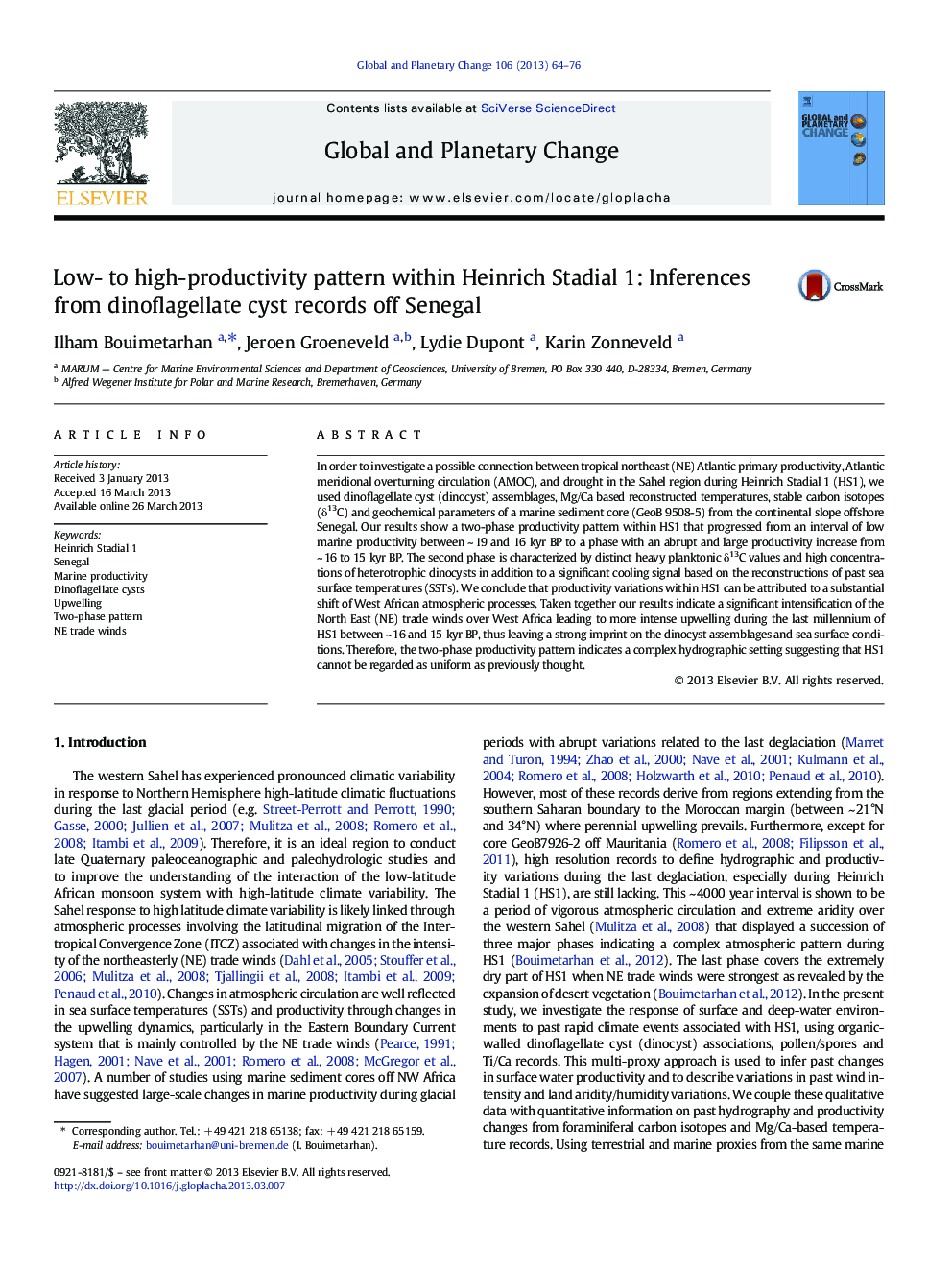| Article ID | Journal | Published Year | Pages | File Type |
|---|---|---|---|---|
| 4463581 | Global and Planetary Change | 2013 | 13 Pages |
•We investigate the tropical NE Atlantic primary productivity during HS1.•Two-phase productivity pattern is revealed by a multi-proxy approach.•Complex hydrographic setting during HS1•Substantial shift of West African atmospheric processes
In order to investigate a possible connection between tropical northeast (NE) Atlantic primary productivity, Atlantic meridional overturning circulation (AMOC), and drought in the Sahel region during Heinrich Stadial 1 (HS1), we used dinoflagellate cyst (dinocyst) assemblages, Mg/Ca based reconstructed temperatures, stable carbon isotopes (δ13C) and geochemical parameters of a marine sediment core (GeoB 9508-5) from the continental slope offshore Senegal. Our results show a two-phase productivity pattern within HS1 that progressed from an interval of low marine productivity between ~ 19 and 16 kyr BP to a phase with an abrupt and large productivity increase from ~ 16 to 15 kyr BP. The second phase is characterized by distinct heavy planktonic δ13C values and high concentrations of heterotrophic dinocysts in addition to a significant cooling signal based on the reconstructions of past sea surface temperatures (SSTs). We conclude that productivity variations within HS1 can be attributed to a substantial shift of West African atmospheric processes. Taken together our results indicate a significant intensification of the North East (NE) trade winds over West Africa leading to more intense upwelling during the last millennium of HS1 between ~ 16 and 15 kyr BP, thus leaving a strong imprint on the dinocyst assemblages and sea surface conditions. Therefore, the two-phase productivity pattern indicates a complex hydrographic setting suggesting that HS1 cannot be regarded as uniform as previously thought.
